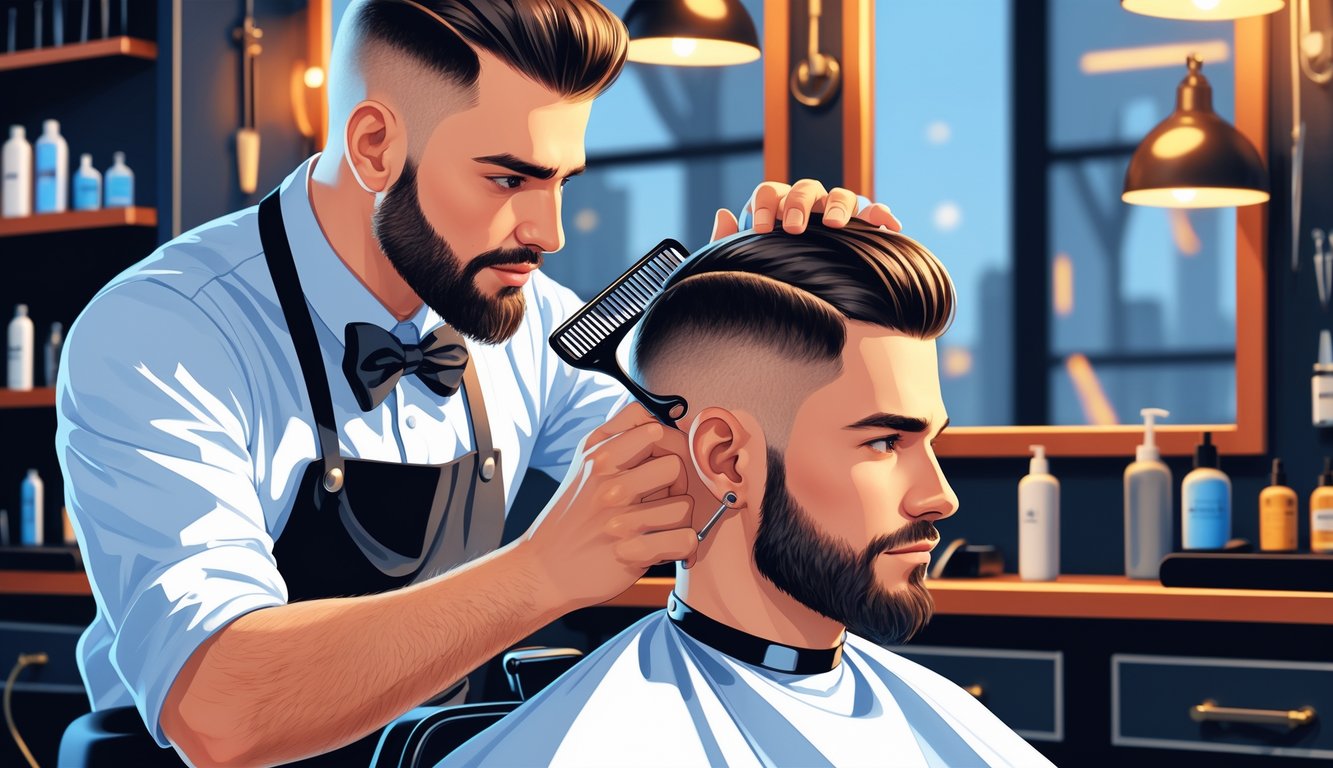
Okay, so why does everyone suddenly act like razor cuts are this mysterious club? I mean, I get the questions constantly. After years stuck behind the chair, I’ll just say it: barbers can spot that razor edge and texture from across the street, and regrowth exposes everything—how you got cut, what tool was used, even if you lied about “just a trim.” There’s this persistent myth (thanks, internet, and all those “expert” blogs) that razor cutting somehow speeds up regrowth or changes thickness, but whatever, the science is boring: Shun Salon basically says it’s just the blunt look from the way the hair’s sliced. No, you’re not summoning magical new follicles. And, oh, nobody ever warns you that humidity can turn razor growout into a complete disaster if you slack on leave-in conditioner. Learned that the hard way.
So when someone drops into my chair with that obvious feathered look—especially on straight hair, which Matty Conrad at Victory Barber claims grows out best after a razor—I’m already clocking all the weird, uneven patches that start popping up after a few weeks. Seriously, if your ends start flipping out in random directions, don’t blame your shampoo. It’s just regrowth physics (whatever that means; nobody agrees anyway, especially on those forums where everyone argues about face shapes instead of actual facts).
Let’s be real—those sharp lines you loved two weeks ago? They turn on you faster than a bad roommate. Your follicles don’t care about your Pinterest board, and neither does my blade. Also, why do people keep asking if I used a new razor? I mean, come on, I’m not a barbarian.
Understanding the Razor Cut Trend
Razor cuts are everywhere. I can’t even get a coffee without seeing at least one person with that “effortless” texture—like, is this 2003 or 2025? TikTok’s obsessed, barbershop price lists have them now, and everyone’s chasing “movement” and “volume.” But if you think you can just grab some scissors from a dollar store and fake it, good luck. Not on my head.
Defining Razor Cuts
First time I got a razor cut, it looked like a disaster—super uneven, but apparently that’s half the point? It’s kind of controlled chaos. The razor slices hair at an angle, not a blunt chop, so every section hangs weirdly, especially if your hair has a mind of its own. Barbers love the “freedom” it gives your hair, like suddenly you’re in a shampoo commercial. The edges get softer, the movement looks real—not that fake, over-styled thing you get with regular scissors.
Texturizing razors (Feather is the brand every fancy stylist seems to love—expensive, but honestly, less damage) make the ends all thin and feathery, so even flat hair stands up a little. Stylists go wild for this on heavy hair. Not kidding, the way regrowth looks after a razor cut versus a classic shear cut? Total opposite vibes. Razor cuts just trick your eyes into seeing more texture, which is basically all anyone wants right now. If you’re into tutorials, Flawless Hair is obsessed with edgy layers and that “lived-in” volume—like, there are a million versions of the shag now.
Why Razor Cuts Became Popular
I swear, one day in 2017, shags, mullets, and all those genderless layers just blew up, and razor cutting crawled out of the crypt. Suddenly, everyone needed movement and softness, nothing stiff or precise. Some LA stylist called it “airy disconnection”—no clue what that means, but people paid extra for it. Then the pandemic hit, everyone butchered their own hair, and when salons reopened, razor cuts were everywhere.
It’s not even just about trends. Razor cuts work on so many hair types—thick Asian hair, fine European, even Afro curls (well, if you’re careful and don’t want to look like a dandelion). Valley Arts District hyped sharp razors for cleaning up the nape or those annoying cowlicks that ruin a shag. Honestly, those details either make or break the whole look.
Comparison to Other Haircut Styles
Compare razor cuts to a basic blunt cut—why bother? Shears just flatten out texture, and you’ll never get those messy, cool transitions with regular scissors. Grown-out bob? Helmet city. Razor cut regrowth? Wild, kind of sexy, even if you’re months overdue for a trim.
Some old-school barbers act like razors are a joke—my mentor used to say, “A good blunt cut never goes out of style,” while sweeping up literal mountains of hair. Sure, but if you want that messy, piecey look, shears are like trying to eat steak with a plastic spoon. The new wave of stylists? Their Instagram is just razor cuts and styling products for days. If you want to avoid those obvious regrowth lines that scream “help,” razor’s the cheat code for keeping it cool but still job-appropriate.
What Barbers Instantly See During Regrowth
Halfway through a trim, I can’t help but notice the telltale signs—wonky lines, weird texture shifts, or that one spot where the razor cut just didn’t land. If you think you’re hiding a bad cut, trust me, you’re not. Barbers know exactly where regrowth snitches on the last haircut, and it’s never in the way you expect.
Identifying Regrowth Patterns
Start with the temples—always the first spot to look weird, and no styling product can hide it for long. When someone insists “it looked perfect last time,” I’m already checking the crown for staggered lengths or patchy density that screams rushed job.
Clients point out one random tuft, but as I’m combing, I see the whole map of their hair’s growth. Typical razor cut regrowth forms these layered, feathered bits—dead giveaway if the last barber used a real Feather razor or just some random knockoff. Most people never notice those tiny split steps along the strand, probably because they’re too busy worrying about their outfit.
Shop lighting kills any chance of a dramatic “reveal.” I just keep an eye out for uneven bulk or choppy patches (which, by the way, get worse as the hair grows). No amount of conditioner hides a bad section—regrowth rats you out whether it’s been two weeks or a month.



